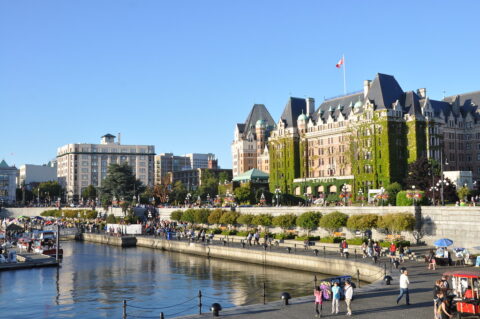Elizabeth Nickson explains some of the driving factors for ever-rising housing prices in Canada:
A friend of mine is building four high-rise condo and rental towers in Victoria, the capital city of British Columbia, where I live. It is a charming city, founded in the 1840s, its core an almost classic English village around which a modern city was slowly built. Not so slow now. It’s the warmest, prettiest city in Canada, surrounded on three sides by ocean, and retirees are flooding the place. Young families are choosing the city to raise their children because it is still small, relatively crime-free and filled with charming neighborhoods.
Here is a view from the marketplace by someone who borrowed $150 million to build housing for the newcomers:
Green energy policies have added maybe $700 a month to the cost of a one bedroom rental unit. It takes over two years to get approval for a rental building in Victoria. Then, another year after initial approval to final approval. That adds another sum. Maybe $300? So rents in theory could be $1000 a month less. That is $1,000 that could go to piano lessons, hockey gear. Private school? And so on. Then Justin let in ONE MILLION people last year into Canada. All unvetted. Canada builds various amounts of housing each year. But 275,000 units is a reasonable average. One million people require 350,000 or so housing units. You want to see upward price pressure on rents? You have not seen anything yet
In fact, “we are two to three million houses short”, says Wendell Cox of Demographia, which has been tracking housing affordability for 25 years across the world. Canada’s two principal cities, Toronto and Vancouver, are among the top four most unaffordable cities in the world, Hong Kong and Sydney being the other two. In my region, everywhere you look, we have tent cities and trailers parked by the side of the road; our economy has been strangled by Covid, debt, inflation, and regulatory madness, so like nearly everywhere, we have a substantial complement of the desperate, despite living among a stunning abundance of resources and talent. Throw in the sharp rise in interest rates and the solution moves from difficult to impossible.
Despite the almost preposterous costs added by “green” energy, “green” land use is the greater reason housing is so constrained in every western democracy. Here’s the crux of the matter: construction costs are only 20 percent lower in a smaller city, but the land in a smaller city would run $90K, while in Toronto or Vancouver or San Francisco or Dublin, it would be upwards of one million dollars.
A green belt is wrapped around every major and minor city. They are called Urban Containment Zones. Much of that land is conserved, in principle to save agricultural land, but in Canada, as elsewhere, urban areas only use 2.5 percent of arable land. World Economic Forum/U.N. rules concerning land use have been adopted by every western democracy, and these rules are disseminated across the world through planning associations. The planner cult is messianic. It hates sprawl, suburbs and cars and while the obvious solution is to build on green belts, the PR unleashed against the idea is vituperative in the extreme. Ontario premier Rob Ford has managed to swap out some green belt land, and is building 50,000 new houses. The press’s reaction against the plan has been vicious, accusing Ford of bribery and paying off his funders.
Yet, there is a ten-year waiting list for public housing in Toronto. British Columbia, like all regions run by the Left, is committed to subsidized housing. But there is a five-year waitlist for any current family housing, and rents for a one bedroom, are almost exactly $1,000 less than in the private sector, meaning that without the green-energy rules, which are ridiculous in such a cold country, private-sector housing could accommodate the less privileged without any cost to the taxpayer, who as it is now pays twice.
Further, the buildings assigned to low-income housing are built to lower standards. There is a happy dancing peasant communitarian aspect to these complexes, but that can degrade very quickly, as Chicago, Detroit, London, have proved. Almost all such complexes end in drug trafficking, single motherhood and kids running wild. The most recent B.C. government failed its promise to build more by 75 percent and its administering agency was found to be corrupt.




